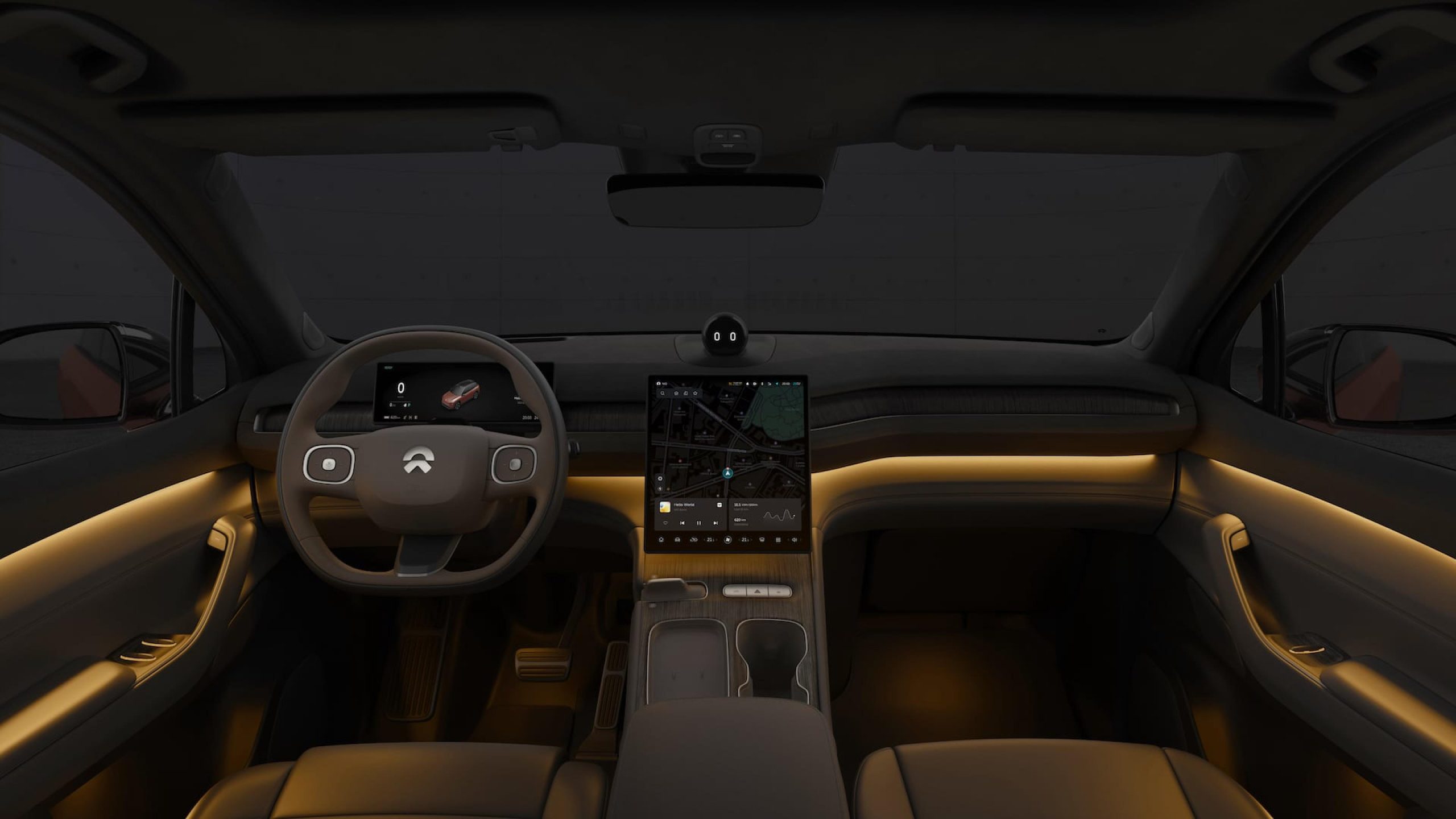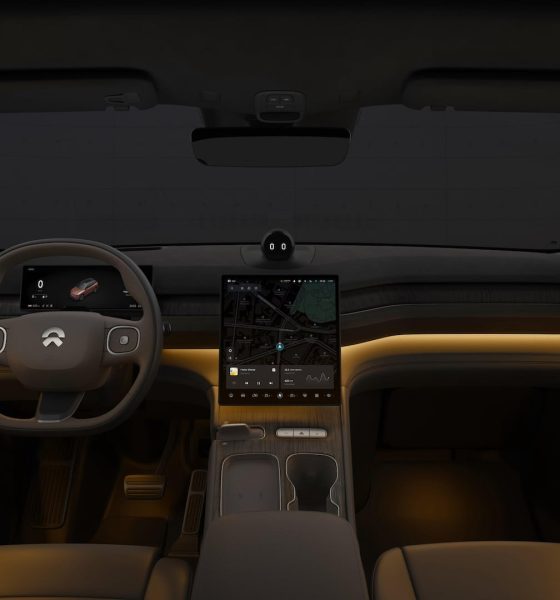The U.S. may place a ban on Chinese software in self-driving and connected vehicles, with the Biden administration expected to propose such rules in the coming weeks.
According to a report from Reuters citing sources briefed on the matter, the U.S. Commerce Department is looking to propose banning Chinese software in autonomous and connected vehicles this month. The rule would ban any Chinese software in U.S. vehicles with Level 3 or higher autonomous capabilities, effectively banning self-driving tests for companies from China.
Level 3 autonomous driving would allow drivers to take their focus off the road and even perform other activities unless otherwise prompted to take over driving by the vehicle. The sources also say the rule would require automakers and suppliers to confirm to regulators that their connected vehicle and Level 3 software platforms weren’t developed in a “foreign entity of concern,” such as China.
On Sunday, a spokesperson from the Commerce Department said the agency was “concerned about the national security risks associated with connected technologies in connected vehicles.”
Chinese self-driving developer reportedly files for IPO in the US
The rule is expected to come from the department’s Bureau of Industry and Security, and the department says that the requirement “will focus on specific systems of concern within the vehicle,” adding that “industry will also have a chance to review that proposed rule and submit comments.”
The Commerce Department initially said last month that it was considering imposing certain limits on some Chinese software, as well as those from other countries considered adversaries.
“Only division of labor and cooperation can bring mutual benefits, and only fair competition can bring technological progress,” said a spokesperson from the Chinese embassy in Washington D.C. in response to the expected proposal “China urges the U.S. to earnestly abide by market principles and international trade rules, and create a level playing field for companies from all countries. China will firmly defend its lawful rights and interests.”
Last Wednesday, the White House and State Department held a meeting with officials from around the world to “jointly address the national security risks associated with connected vehicles,” according to the department. The meeting also included details about the administration’s plans to propose the rule.
The conference included officials from the U.S., Canada, Australia, the European Union (EU), the United Kingdom (UK), Germany, Spain, India, South Korea, and Japan, who “exchanged views on the data and cybersecurity risks associated with connected vehicles and certain components.”
The topic of national security risks surrounding connected vehicles has been around for quite some time, with a group of legislators last November bringing forward concerns that Chinese companies could collect and misuse sensitive data in autonomous vehicle tests.
“The national security risks are quite significant,” said Gina Raimondo, Commerce Secretary, in a statement in May. “We decided to take action because this is really serious stuff.”
The news comes after the U.S. increased tariffs on Chinese electric vehicles (EVs) in May, in order to stave off cheap competitors to U.S.-built products. The EU lodged also launched tariffs on Chinese EVs last month, and Canada is considering similar legislation.
It also comes as multiple companies have gained approval to test autonomous driving tech in China, including domestic makers Nio, BYD, Changan Auto, GAC, SAIC, BAIC BluePark, China FAW Group, SAIC Hongyan, and Yutong Bus. Over the weekend, Mercedes-Benz became the first foreign company to gain approval for Level 4 autonomous driving tests in China, and Tesla is expected to gain full approval for its Full Self-Driving (FSD) Supervised later this year.
Tesla China to test 10 FSD vehicles ahead of expected public rollout: report
What are your thoughts? Let me know at zach@teslarati.com, find me on X at @zacharyvisconti, or send us tips at tips@teslarati.com.

News
Tesla FSD fleet is nearing 7 billion total miles, including 2.5 billion city miles
As can be seen on Tesla’s official FSD webpage, vehicles equipped with the system have now navigated over 6.99 billion miles.

Tesla’s Full Self-Driving (Supervised) fleet is closing in on almost 7 billion total miles driven, as per data posted by the company on its official FSD webpage.
These figures hint at the massive scale of data fueling Tesla’s rapid FSD improvements, which have been quite notable as of late.
FSD mileage milestones
As can be seen on Tesla’s official FSD webpage, vehicles equipped with the system have now navigated over 6.99 billion miles. Tesla owner and avid FSD tester Whole Mars Catalog also shared a screenshot indicating that from the nearly 7 billion miles traveled by the FSD fleet, more than 2.5 billion miles were driven inside cities.
City miles are particularly valuable for complex urban scenarios like unprotected turns, pedestrian interactions, and traffic lights. This is also the difference-maker for FSD, as only complex solutions, such as Waymo’s self-driving taxis, operate similarly on inner-city streets. And even then, incidents such as the San Francisco blackouts have proven challenging for sensor-rich vehicles like Waymos.
Tesla’s data edge
Tesla has a number of advantages in the autonomous vehicle sector, one of which is the size of its fleet and the number of vehicles training FSD on real-world roads. Tesla’s nearly 7 billion FSD miles then allow the company to roll out updates that make its vehicles behave like they are being driven by experienced drivers, even if they are operating on their own.
So notable are Tesla’s improvements to FSD that NVIDIA Director of Robotics Jim Fan, after experiencing FSD v14, noted that the system is the first AI that passes what he described as a “Physical Turing Test.”
“Despite knowing exactly how robot learning works, I still find it magical watching the steering wheel turn by itself. First it feels surreal, next it becomes routine. Then, like the smartphone, taking it away actively hurts. This is how humanity gets rewired and glued to god-like technologies,” Fan wrote in a post on X.
News
Tesla starts showing how FSD will change lives in Europe
Local officials tested the system on narrow country roads and were impressed by FSD’s smooth, human-like driving, with some calling the service a game-changer for everyday life in areas that are far from urban centers.

Tesla has launched Europe’s first public shuttle service using Full Self-Driving (Supervised) in the rural Eifelkreis Bitburg-Prüm region of Germany, demonstrating how the technology can restore independence and mobility for people who struggle with limited transport options.
Local officials tested the system on narrow country roads and were impressed by FSD’s smooth, human-like driving, with some calling the service a game-changer for everyday life in areas that are far from urban centers.
Officials see real impact on rural residents
Arzfeld Mayor Johannes Kuhl and District Administrator Andreas Kruppert personally tested the Tesla shuttle service. This allowed them to see just how well FSD navigated winding lanes and rural roads confidently. Kruppert said, “Autonomous driving sounds like science fiction to many, but we simply see here that it works totally well in rural regions too.” Kuhl, for his part, also noted that FSD “feels like a very experienced driver.”
The pilot complements the area’s “Citizen Bus” program, which provides on-demand rides for elderly residents who can no longer drive themselves. Tesla Europe shared a video of a demonstration of the service, highlighting how FSD gives people their freedom back, even in places where public transport is not as prevalent.
What the Ministry for Economic Affairs and Transport says
Rhineland-Palatinate’s Minister Daniela Schmitt supported the project, praising the collaboration that made this “first of its kind in Europe” possible. As per the ministry, the rural rollout for the service shows FSD’s potential beyond major cities, and it delivers tangible benefits like grocery runs, doctor visits, and social connections for isolated residents.
“Reliable and flexible mobility is especially vital in rural areas. With the launch of a shuttle service using self-driving vehicles (FSD supervised) by Tesla in the Eifelkreis Bitburg-Prüm, an innovative pilot project is now getting underway that complements local community bus services. It is the first project of its kind in Europe.
“The result is a real gain for rural mobility: greater accessibility, more flexibility and tangible benefits for everyday life. A strong signal for innovation, cooperation and future-oriented mobility beyond urban centers,” the ministry wrote in a LinkedIn post.
News
Tesla China quietly posts Robotaxi-related job listing
Tesla China is currently seeking a Low Voltage Electrical Engineer to work on circuit board design for the company’s autonomous vehicles.

Tesla has posted a new job listing in Shanghai explicitly tied to its Robotaxi program, fueling speculation that the company is preparing to launch its dedicated autonomous ride-hailing service in China.
As noted in the listing, Tesla China is currently seeking a Low Voltage Electrical Engineer to work on circuit board design for the company’s autonomous vehicles.
Robotaxi-specific role
The listing, which was shared on social media platform X by industry watcher @tslaming, suggested that Tesla China is looking to fill the role urgently. The job listing itself specifically mentions that the person hired for the role will be working on the Low Voltage Hardware team, which would design the circuit boards that would serve as the nervous system of the Robotaxi.
Key tasks for the role, as indicated in the job listing, include collaboration with PCB layout, firmware, mechanical, program management, and validation teams, among other responsibilities. The role is based in Shanghai.
China Robotaxi launch
China represents a massive potential market for robotaxis, with its dense urban centers and supportive policies in select cities. Tesla has limited permission to roll out FSD in the country, though despite this, its vehicles have been hailed as among the best in the market when it comes to autonomous features. So far, at least, it appears that China supports Tesla’s FSD and Robotaxi rollout.
This was hinted at in November, when Tesla brought the Cybercab to the 8th China International Import Expo (CIIE) in Shanghai, marking the first time that the autonomous two-seater was brought to the Asia-Pacific region. The vehicle, despite not having a release date in China, received a significant amount of interest among the event’s attendees.










